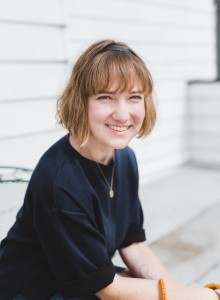CSUN Prof Receives Grant to Help Tell History of LA Park

CSUN history professor Jessica Kim and her students will be conducting research and developing historical signage and educational programs at Los Angeles State Historic Park, with the goal of elevating the rich, “untold” stories of the area, including those of Black, Latinx, Asian and Indigenous communities. Photo by Javier Rojas.
Los Angeles State Historic Park sits just north of Chinatown on a stretch of land that once housed the train station where new arrivals to Los Angeles from the East first disembarked.
The park includes green spaces where families can kick around a ball, host picnics and fly kites. Visitors can enjoy running and biking paths and when California State University, Northridge history professor Jessica Kim and her students are done, learn more about the city’s history and its people.

Jessica Kim
Kim has been awarded more than $100,000 by the California Department of Parks and Recreation to research and develop historical signage and educational programs at the park, with the goal of elevating the rich, “untold” stories of the area, including those of Black, Latinx, Asian and Indigenous communities.
“Parks present a wonderful opportunity to teach people about who we are and what came before us,” said Kim, who teaches in CSUN’s College of Social and Behavioral Sciences. “This is also an opportunity to remind people that they can make change when they work together. Los Angeles State Historic Park would not be here if not for the grassroots activism of residents who worked together to demand that, instead of being developed, the land be turned into much needed greenspace. As time passes, the people responsible for the park’s creation are beginning to leave us. We need to preserve their oral histories while we can and share those stories with the pubic.”
The grant is part of the Department of Parks and Recreation’s Relevancy and History Project, which focuses on interpretive practices and outreach to underserved communities.
As part of the project, Kim and her students will be conducting research on how the land where the park now sits was used and the people who once lived in the area.
Kim noted that when the A Line adjacent to the park was being constructed, work crews uncovered remains of the original irrigation ditch that once brought water from the Los Angeles River to the Pueblo of Los Angeles during Spanish colonial times.
“It was probably constructed along the lines of Indigenous irrigation routes, so it may even predate the 18thcentury,” she said. “The rail line to Los Angeles is also contained in the park and it’s also not marked.”
The park is often referred to as the Cornfield, a nickname derived from the corn leaking from train cars on that original line that spouted along the tracks. In more recent time, the land was an abandoned brown patch surrounded by industrial warehouses and rail lines.
Kim and her students hope to find a way to tell the story of the park’s history that is inviting and inspires visitors about the lives of the people who existed on the site before them.
“Traditionally, in state parks, and lots of historic sites, there are signs that alert park goers to what they are seeing,” Kim continued. “But there are more creative ways — through educational programming, events or something we haven’t even thought of yet — to educate people about the history of the park and the city that surrounds it.”
As part of the project, Kim is creating a practicum class for spring 2024 that will focus on the Los Angeles Historic Park project, researching the park’s history, its needs and creating educational materials for the public. She will oversee the development of a public history curriculum to support workshop-style training for park staff. The project also includes four year-long paid internships for students.
Kim said she and her students will be working with the park’s staff to come up with creative ways to entice park visitors to learn more about its history than a quick glance at a sign.
“Perhaps it’s QR codes that people can scan to learn more about something or some other innovative idea,” she said. “The students and I will be working with the park’s staff to determine what we think will work best.”

 experience
experience